10 historical places in Singapore
Hey there, history buffs! If you haven’t been to Singapore, now is the perfect time to consider a trip to this unique and elegant city. It’s clean, bright and modern, with reminders of its past everywhere and grand architecture dating to the European settlement in the early 19th century. Since then, the Lion City has become home to many major religions, as well a hub of world events from the Chinese Revolution to occupations to several important military campaigns. Singapore is fairly compact, and much of it can be seen in a single visit. To get a good overall picture of the history of this intriguing city state, take in:
- The Sun Yat-Sen Memorial Hall
- Raffles Hotel
- Tea Chapter
- Chinatown
- Old Parliament House
- The Civilian War Memorial
- Kranji War Memorial and Military Cemetery
- The Battle Box
- Fort Siloso
- Museums
1. Sun Yat-Sen Nanyang Memorial Hall

Sun Yat-Sen was a Chinese revolutionary who led the resistance against the Qing dynasty in the late nineteenth and early twentieth centuries. He would go on to become the first president of the People’s Republic and became known as the Father of the Nation. Yat-Sen used this colonial-style villa as a base for many of the rebellion’s activities, and it’s now been refurbished as a museum featuring artifacts and stories from the revolution and the mastermind behind it.
2. Raffles Hotel
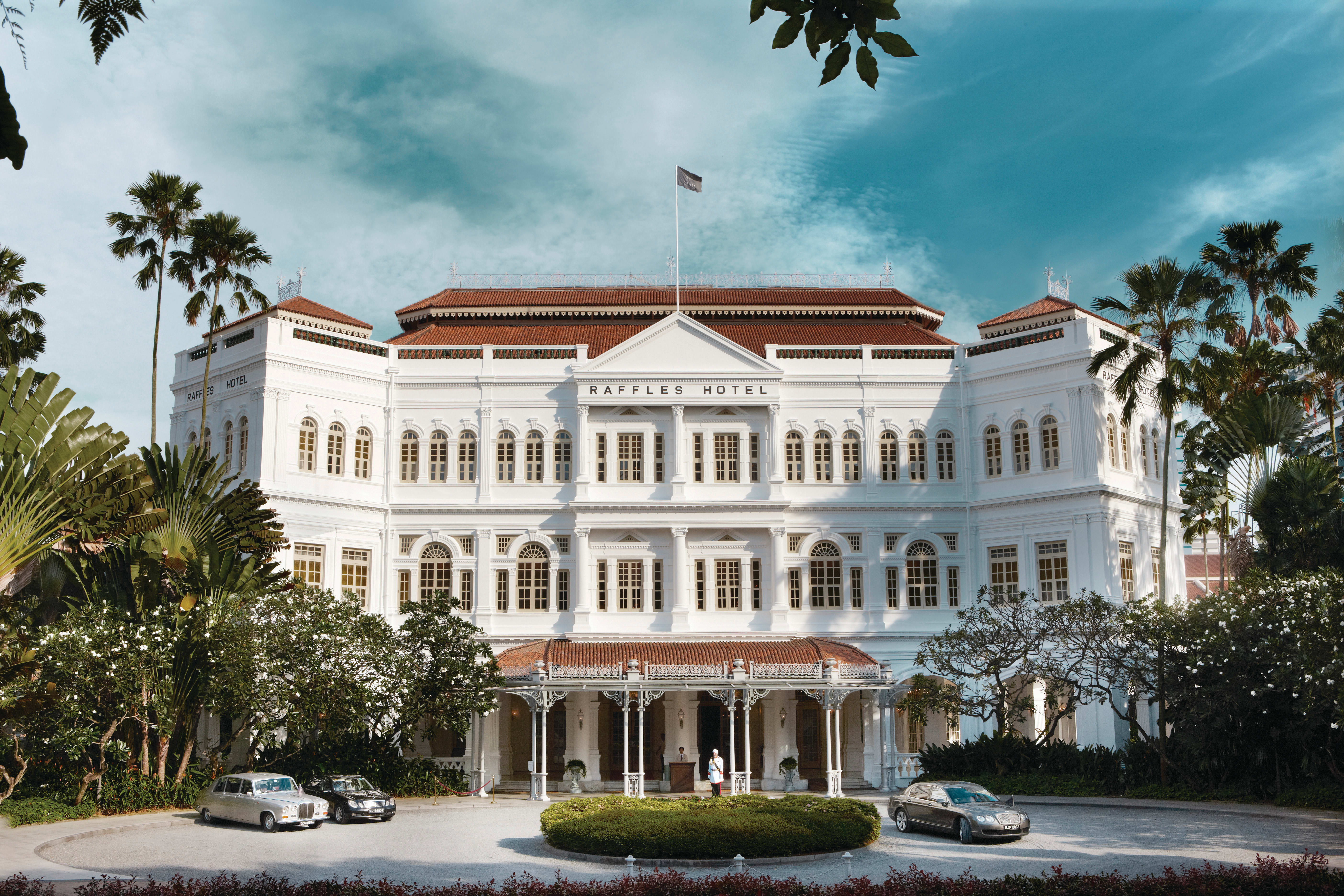
Possibly the most famous building in Singapore – from the Colonial era at least – Raffles Hotel is a must for any visitor to this city and is on the yellow line of the Big Bus Tour. This immense neo-renaissance-style villa, which started as a quaint beach hotel set amidst tropical palms, was converted into a luxury hotel in 1887 and named after the city’s founder, Sir Stamford Raffles. Stroll the long corridors, following in the footsteps of famous guests like Sir Rudyard Kipling, Charlie Chaplin and Queen Elizabeth II, and try a cocktail in the famous Long Bar - birthplace of the Singapore Sling.
3. Chinese tea drinking at Tea Chapter
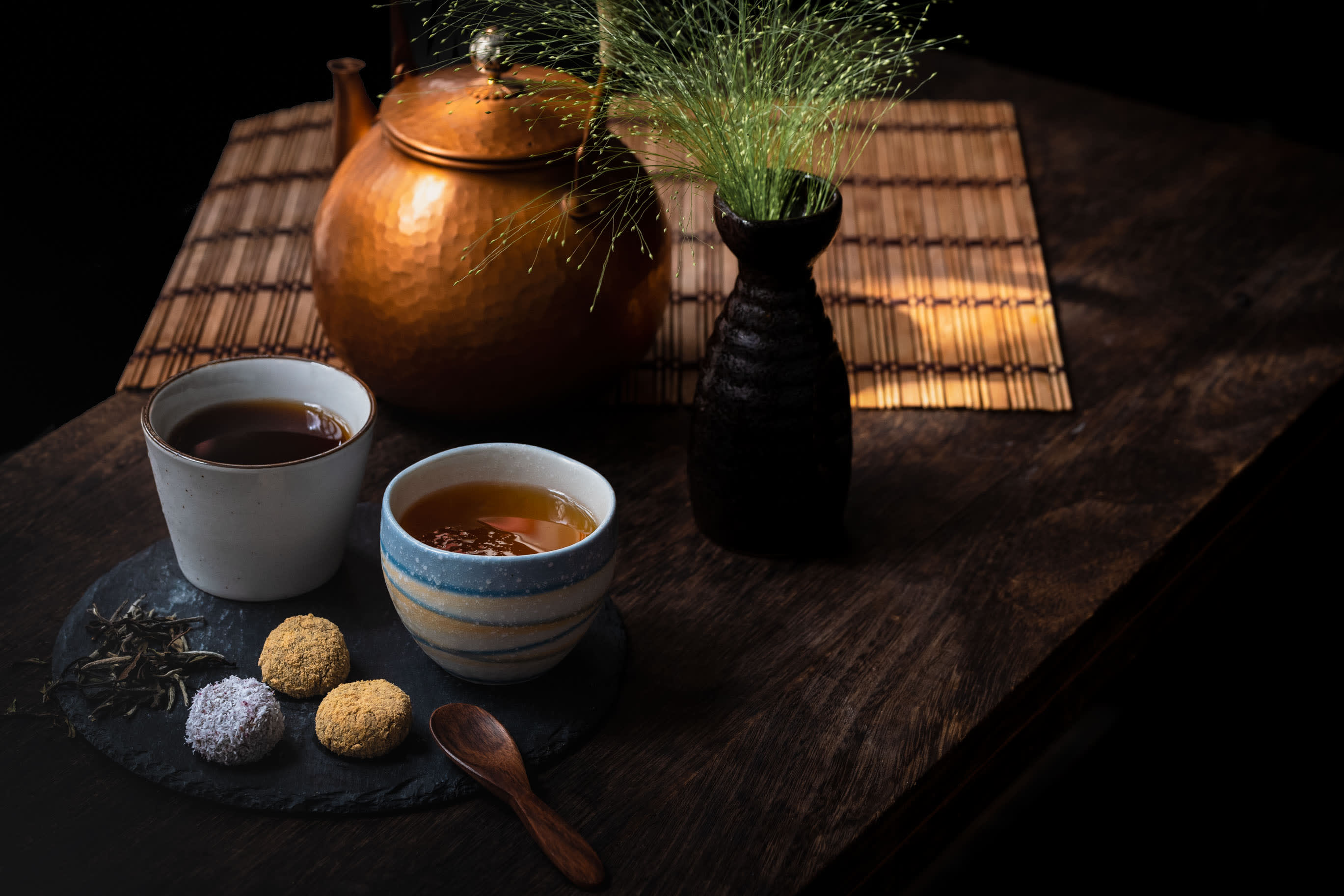
Tea drinking has been an important ritual in Chinese culture for at least 2,000 years, and possibly more. What better way to experience it than in the oldest tea house in Singapore? Escape from the bustle of Chinatown and enjoy a moment of calm as you kick off your shoes (literally) and enter the tranquil space of the tea room. Relax in zen-like surroundings, sip on a cup of Tea Chapter’s signature Imperial Golden Cassia tea, and know that you’re helping to keep an ancient tradition alive.
4. Chinatown
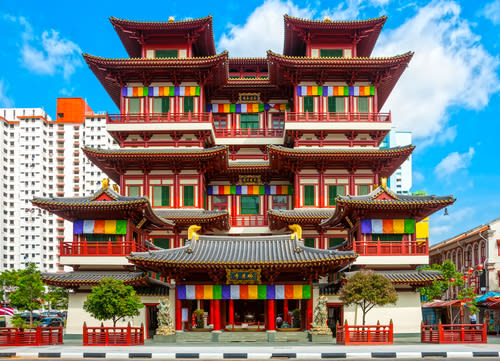
In 1843 Sir Stamford Raffles officially allocated the area west of the Singapore River as the Chinese Campong. It’s now the largest historic district in the city and is a hub for many major religions – keep an eye out for the city’s oldest Hindu temple, Sri Mariamman, the oldest Hokkien temple, Thian Hock Keng, the Masjid Jamae Mosque and the aptly named Buddha Tooth Relic Temple and Museum. Spend a few hours wandering the district and soaking it all up (it’s on the Red Line of the Big Bus Tour), but if you need a little guidance, or want to dive a little deeper into the history of the area, try a guided bike tour or even an open world outdoor escape room.
5. Old Parliament House
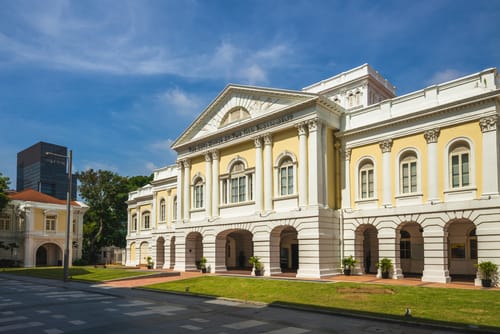
Explore the history of Singapore’s government and legal system at the oldest building in the city. Originally built as a residence in 1827, it became a courthouse soon afterwards and remained so until 1865, even after being purchased by the East India Company in 1841. Throughout the twentieth century it served as the Supreme Court, the Legislative Assembly House and then Parliament House, until the new parliament building was opened in 1999. It’s now an arts center, and visitors are welcome to stroll the old corridors where permanent exhibitions detail the story of the building and the lives of famous Singaporeans throughout history.
6. Civilian War Memorial
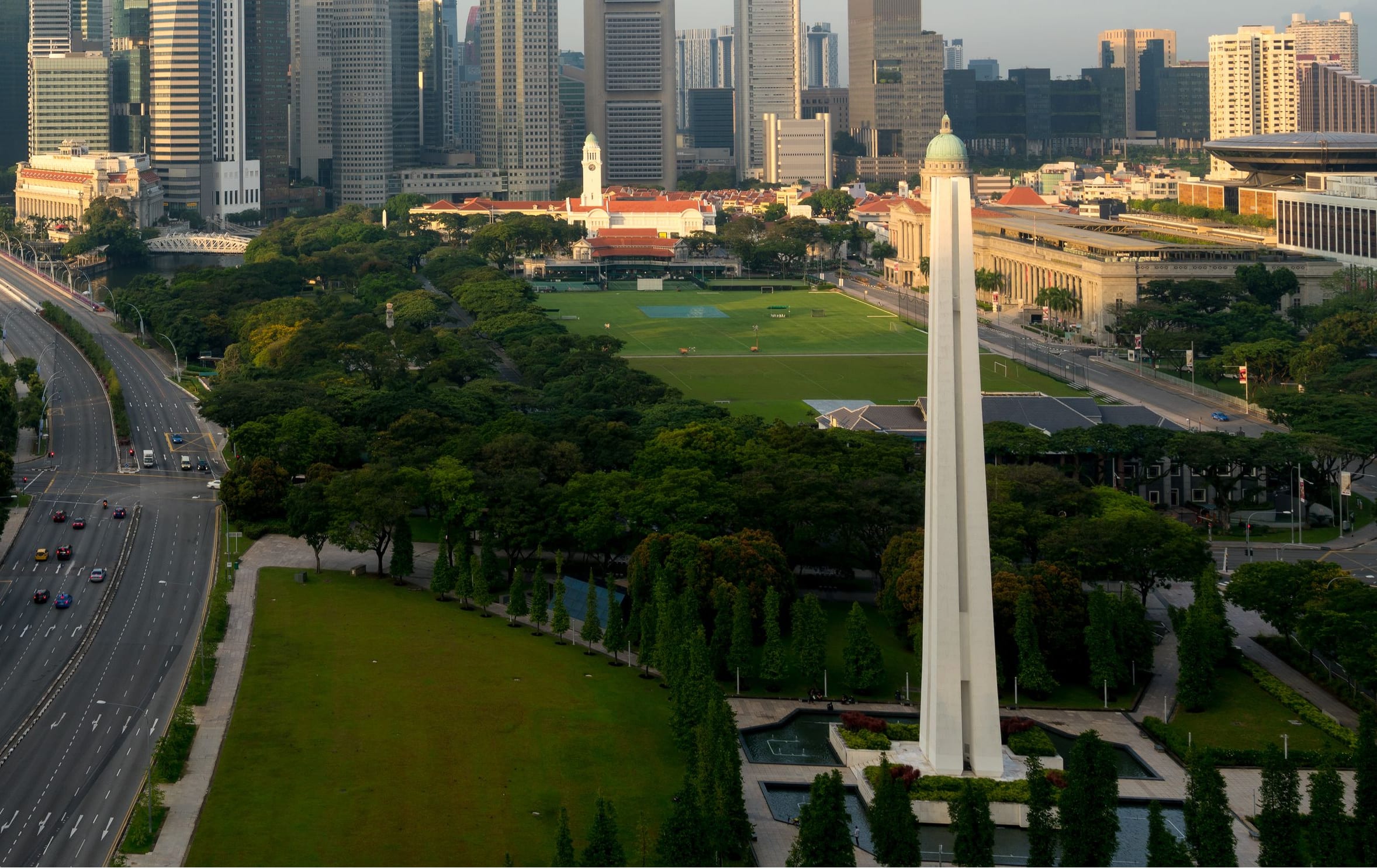
The former burial chambers of victims of the Japanese occupation of Singapore in World War Two now form part of the foundations of the Civilian War Memorial, standing tall in War Memorial Park. It was opened on February 15th, 1967, 25 years after the fall of the city, and a memorial service is held here every year on that date. The monument is made up of four pillars (affectionately called ‘The Chopsticks’ by locals) representing the Chinese, Malayan, Indian and Eurasian populations of the city. Nearby is the Indian National Army Monument, which stands on the site of an earlier memorial to an unknown Indian soldier.
7. Kranji War Memorial and Military Cemetery
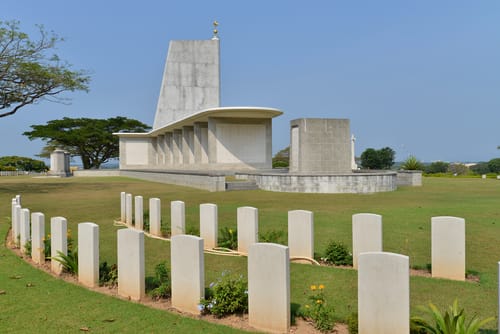
A poignant and eerie place, the Kranji War Memorial is a stark and upright monument honoring lives lost in the two world wars. Originally a military camp, the Kranji area was used as a prison by the occupying Japanese forces, and it was the inmates who first established a small cemetery here for their deceased compatriots. The memorial is now the final resting place of more than 4,000 commonwealth and Chinese soldiers and is the site of a significant remembrance ceremony on November 11 every year.
8. The Battle Box
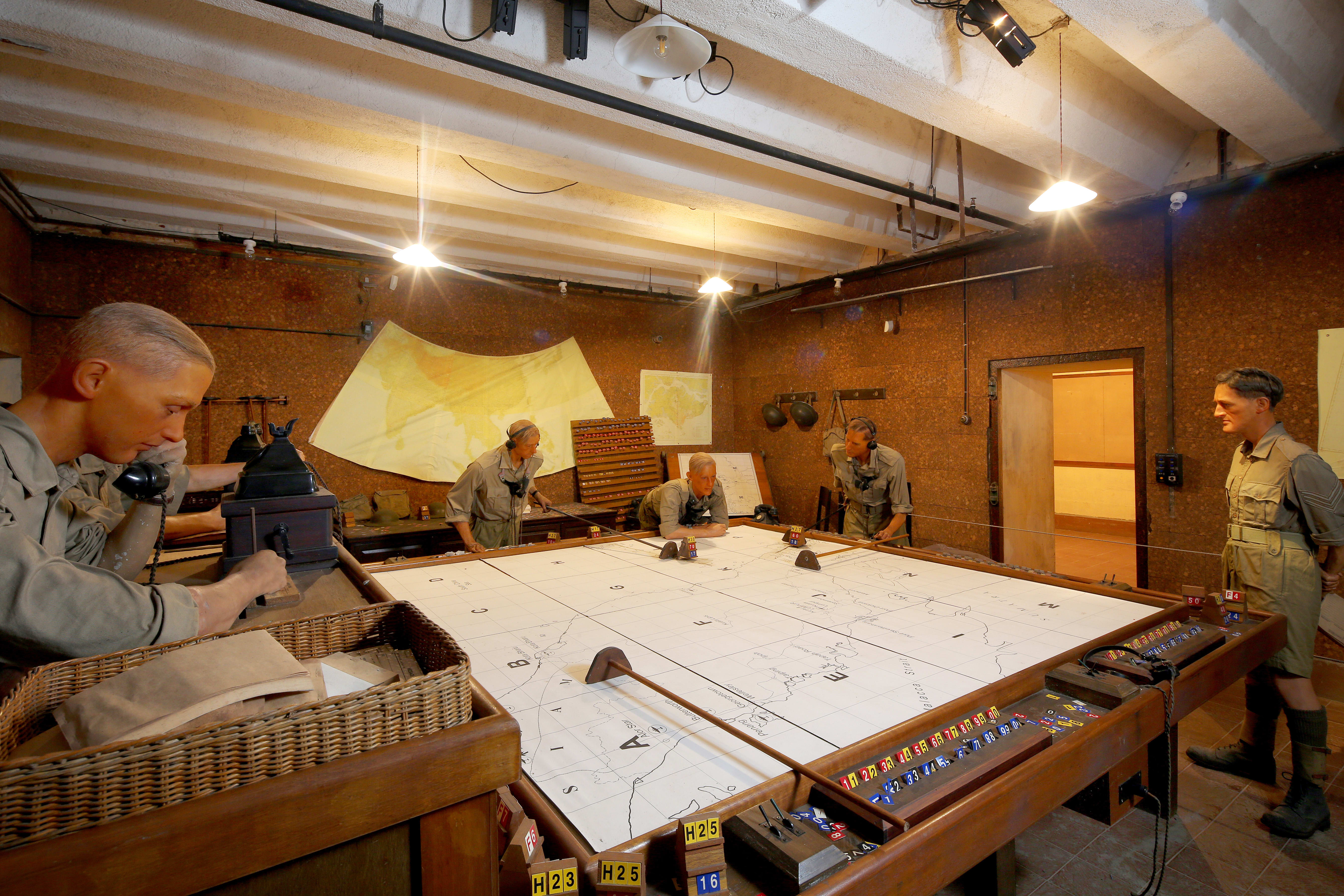
True to its name, the Battle Box is a small underground bunker which was used as a bomb shelter during World War Two. Visitors can explore 26 rooms below Fort Canning Hill, reconstructed with wax statues, moving figures and historical artifacts. Learn how Lieutenant-General Percival and his senior officers directed the Battle of Singapore, watch battle campaigns unfold on land, sea and air and get lost in the labyrinth of rooms and corridors. Your ticket includes a 30-minute guided tour, but after that you’re free to wander and explore on your own.
9. Fort Siloso
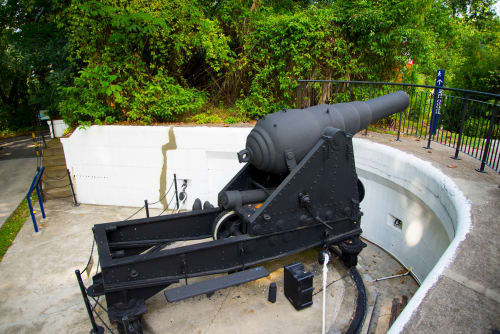
Another World War Two site, though this one has history dating back to the nineteenth century when it was one of three forts built to defend the city from potential sea invasion. Sitting at the north-west corner of the island of Sentosa, Fort Silosa was brought back into service in the twentieth century and now houses a military museum, underground tunnels and interactive video displays. Get there via a pretty coastal walk or ride the gondola from Faber Peak.
10. The Museum District
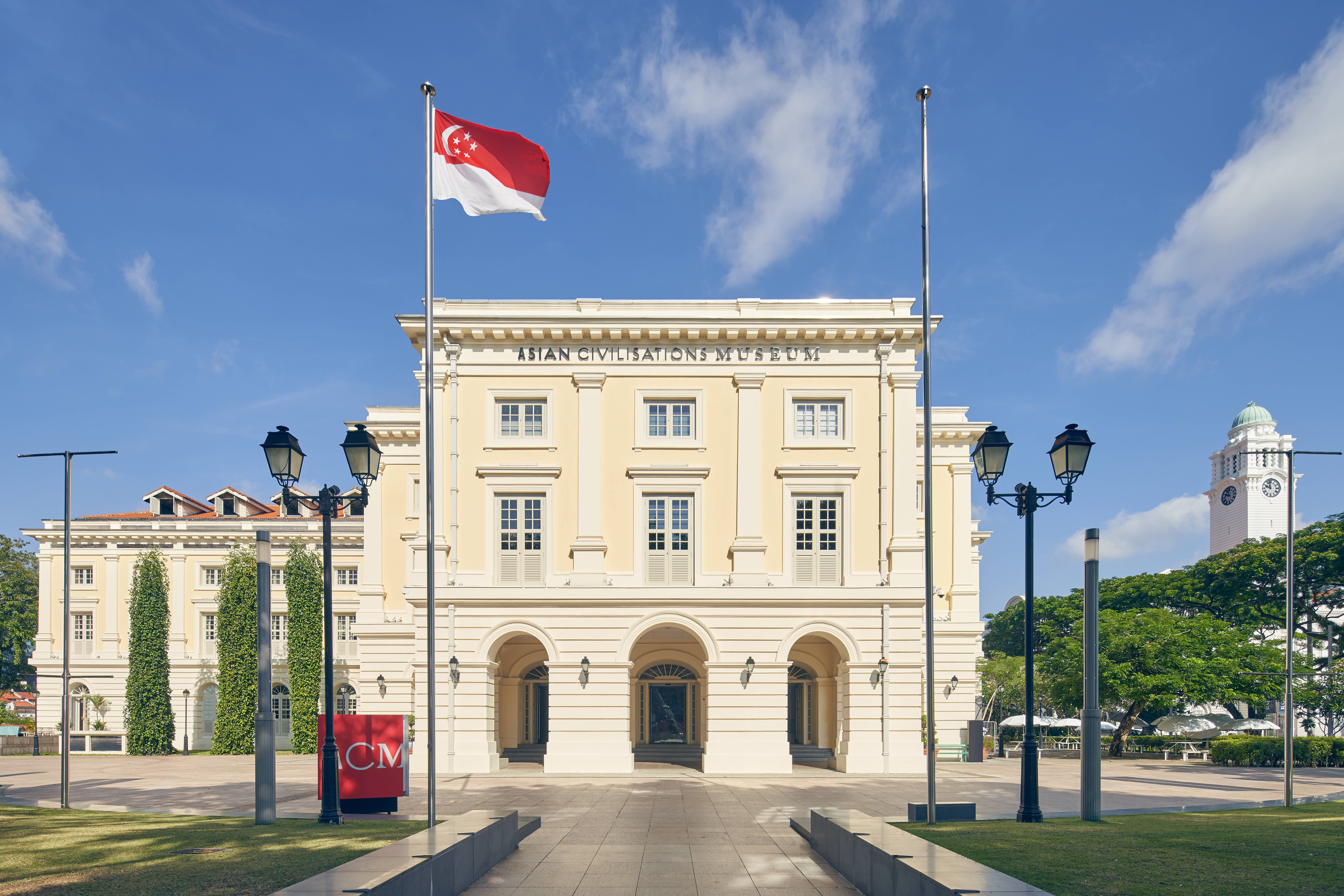
Okay, so not strictly a historical site in itself, but Singapore’s museums together offer an interesting and comprehensive guide to the history of the area, pre- and post-colonialization. The National Museum of Singapore, dating to 1887, captures the history of the city through its cultures, traditions and stories. The Indian Heritage Center reaches a little further, exploring the history of India and southern Asia, while the Asian Civilizations Museum takes a religious perspective, covering Hindu, Buddhist, Muslim, Christian and Jain heritage in the city.
Be a history buff with Go City
Singapore has a rich heritage of cultural, military and religious history. See it all and save money with a Go City Explorer or All-Inclusive Pass today!
